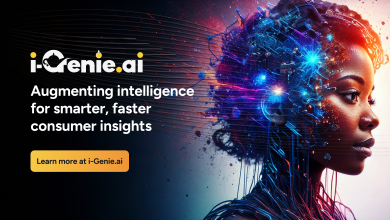AI can only be as smart as the data it is trained on. And sadly, much of that data is still in the desktop era. While today’s users are swiping, tapping, and finding their way in the world through their phone, a lot of AI models are still learning about how people clicked and scrolled in 2010. This is a problem because when your training data doesn’t match how people actually use technology in real life—fast, on the go, and with thumbs instead of mice—your AI starts making weird decisions. The answer is where your users are: on mobile.
The Desktop Bias in AI Training
Here’s something many AI teams don’t talk about: the majority of training data is still derived from a desktop environment. While desktop formats were ubiquitous a few years ago, there are significant discrepancies between desktop and mobile users. This means that you need to train your models, based on data from actual mobile IPs, and for that you need mobile proxies.
Desktop users behave differently—they spend more time per session, use a mouse and keyboard, and interact with content in a relatively linear, predictable way. Most people do not use technology like that nowadays. Mobile use has surpassed desktop in both volume and variety, yet many models continue to learn from an old set of interactions.
The result? AI that performs well in theory but struggles in practice – recommendation engines land flat, chatbots feel awkward and personalization misses the mark. If you develop models with desktop rather than mobile behavior in mind, your custom models will be trained on the wrong user data, resulting in useless predictions and poor user experiences.
Mobile vs. Desktop Behavior
Mobile users aren’t just mini desktop users – they’re a whole different demographic. The way people use phones is faster, more instinctive and completely surrounded by real-world context.
People check their apps while walking on the street (carefully), swipe through content with just a thumb, and expect instant results. That creates data patterns that are wildly different from those on desktop. Here’s what sets mobile behavior apart:
- Touch-based gestures – taps, swipes, pinches… no mouse, no problem
- Shorter attention spans – users jump in and out of apps in seconds
- Location-aware decisions – “What’s nearby?” is a constant filter
- App-centric flow – fewer tabs, more isolated, focused activity
The Role of Mobile Proxies in AI Development
So, how do you actually get real mobile user data without stalking people on the street? Enter mobile proxies. They help you by routing your requests through actual mobile devices. In other words, they make your data scraping appear and behave as it would come from a real person using their phone. That matters. Why? Because platforms treat mobile traffic differently.
The content, layout, and replies all differ. Mobile proxies enable AI teams to collect actual training data—without the artificial input of a simulation or lab environment. Mobile proxies are also useful for obtaining geo-specific material and capturing genuine behavioral patterns that data center IPs would not be able to detect.
Types of Mobile-Specific Data
Not all data is created equal—especially when it comes to training AI. If your goal is to build systems that actually understand users, then tapping into mobile-specific behavior isn’t optional—it’s essential. Mobile proxies open the door to data that’s rich, real, and incredibly telling. Below are a few types of mobile-only insights.
Swipe Patterns and Gesture Data
Swipes aren’t just random flicks of the thumb—they’re micro-decisions. AI models trained on gesture data can better predict user intent, spot friction in app flows, and even personalize content positioning. It’s like giving your algorithm a sense of rhythm.
Mobile App Usage
Mobile users bounce between apps like pinballs. Understanding which apps they open, when, and in what sequence can reveal behavioral context that desktop data simply can’t offer. It’s gold for recommendation systems and session prediction models.
Location-Based Preferences
Where someone is located often says more than what they click. Location-based data helps AI respond with accurate suggestions right when they are needed. Yes, that includes your chatbot knowing not to suggest snow boots in Bali.
Where Mobile Data Makes a Difference
Where does all this mobile data magic really create value? Almost anywhere where AI is expected to act as if it knows the user. Think recommendation engines – using mobile-specific data like in-app behavior and location, you can recommend content that is not just aligned, but feels eerily spot-on.
Or chatbots for example. When you feed them swipe behavior and geo-context, suddenly they stop sounding like robots and start feeling like personal assistants.
Then there’s fraud detection. Mobile signals such as device IDs and carrier IPs make it more difficult for fraudsters to impersonate them, hence significantly improving your security models.
From personalised shopping applications to location-aware food delivery and hyper-targeted news feeds, mobile-origin data transforms guessing into accuracy.
Why Should You Choose Mobile Proxy Today?
Another reason mobile proxies are becoming non-negotiable is accessibility. Many platforms now deliver completely different content—or block it entirely—depending on whether a request originates from a mobile or desktop IP address. Without a mobile proxy, your data scraping or model testing could miss important features, layouts, or experiences that real users see on a daily basis.
Using real mobile data through mobile proxies isn’t just a technical choice—it’s a competitive advantage. If your AI still thinks like a desktop user, it’s time for a wake-up call. Mobile is where real behavior happens—fast, messy, and full of context. Training with mobile data it’s how you build AI that doesn’t just function, but actually understands the people it serves.







